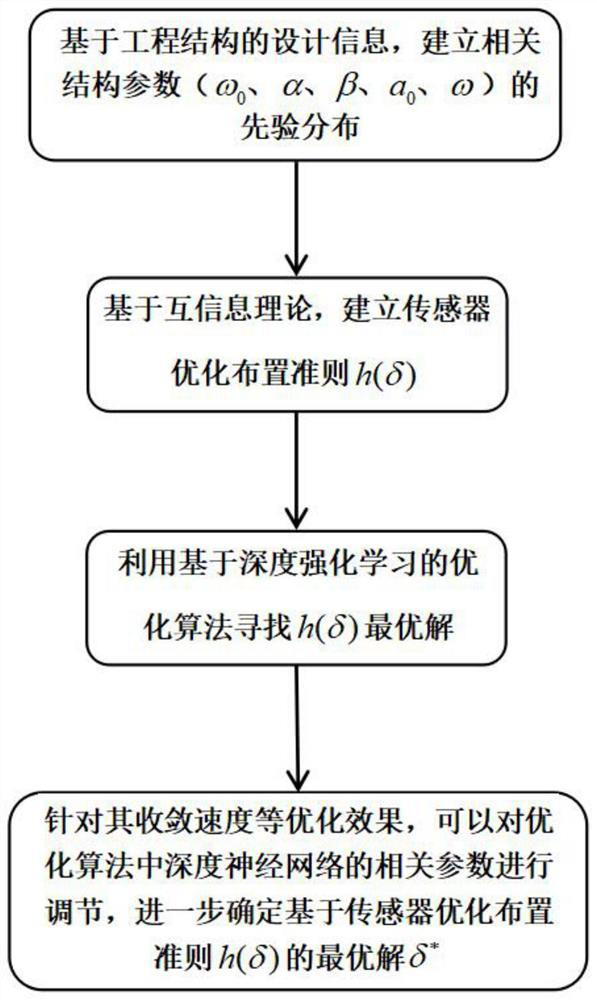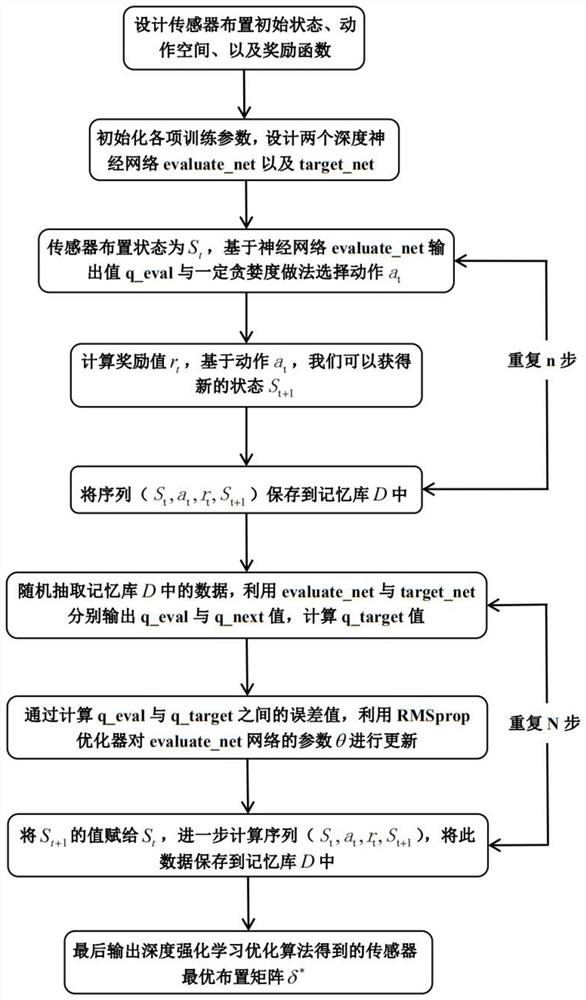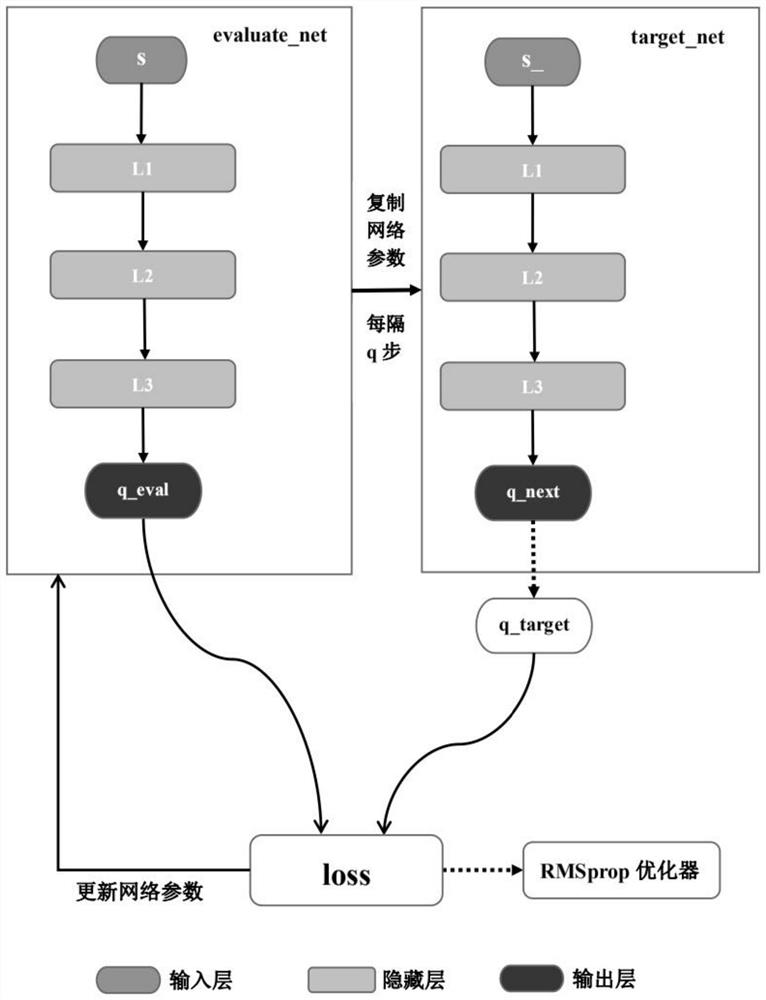A method for optimal placement of sensors based on deep reinforcement learning
A reinforcement learning and sensor technology, applied in neural learning methods, biological neural network models, neural architectures, etc., can solve problems such as high-dimensional, non-convex objective functions, and achieve the effect of reducing time-consuming and improving training efficiency
- Summary
- Abstract
- Description
- Claims
- Application Information
AI Technical Summary
Problems solved by technology
Method used
Image
Examples
Embodiment
[0093] combine Figure 4 , optimize the arrangement of sensors for the eight-story frame structure, and use the optimization algorithm to find two optimal positions for sensor arrangement. The mass matrix M and stiffness matrix K information of the engineering structure are as follows:
[0094]
[0095]
[0096] Next, use the optimization algorithm based on deep reinforcement learning in the present invention to find the optimal arrangement position of the sensor:
[0097] Said step one is specifically: based on the design information of the engineering structure, establishing relevant structural parameters (including the structural natural frequency ω 0 , Rayleigh damping coefficients α and β, amplitude and frequency a of the external force on the engineering structure 0 and the prior probability distribution of ω):
[0098] ω 0 ~lnN(·|μ=2π,σ=0.25)
[0099] α~lnN(|μ=0.1,σ=0.01)
[0100] β~lnN(|μ=10 -4 ,σ=10 -5 )
[0101] a 0 ~N(|μ=0,σ=0.4g)
[0102] ω~lnN(·|μ...
PUM
 Login to View More
Login to View More Abstract
Description
Claims
Application Information
 Login to View More
Login to View More - R&D
- Intellectual Property
- Life Sciences
- Materials
- Tech Scout
- Unparalleled Data Quality
- Higher Quality Content
- 60% Fewer Hallucinations
Browse by: Latest US Patents, China's latest patents, Technical Efficacy Thesaurus, Application Domain, Technology Topic, Popular Technical Reports.
© 2025 PatSnap. All rights reserved.Legal|Privacy policy|Modern Slavery Act Transparency Statement|Sitemap|About US| Contact US: help@patsnap.com



